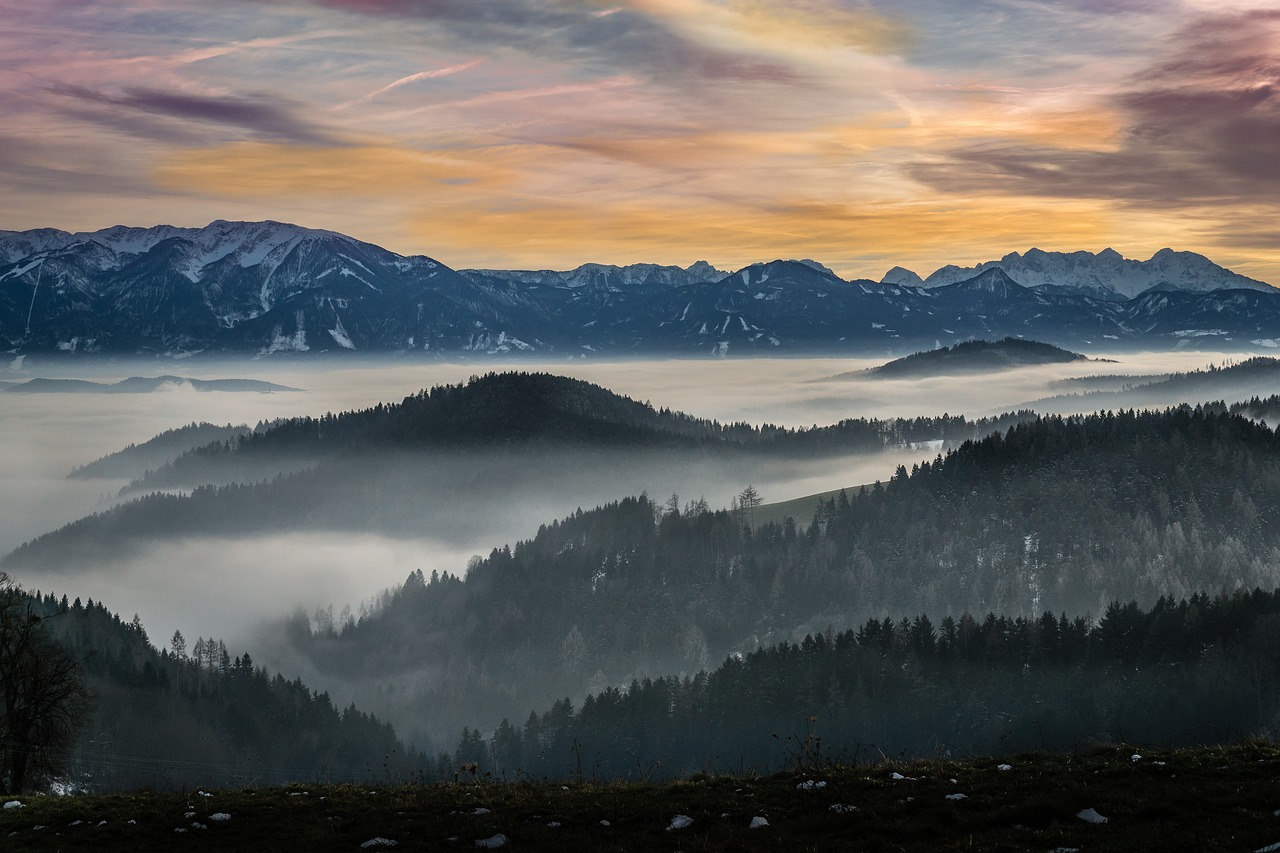
Mystery novels, A story of mysterious disappearing, Mysterious crimes, Mystery stories, many love these type of books. But there are mysteries in our real lives too!
Mysteries which are still unsolved. Like mysterious disappearing of planes. Of people. How some natural thing was formed, or how the tectonic plates arrived. Or even how H2O was formed. How the oxygen arrived, and so on. The list will never end. But, one of them, which attracts, probably, most of the attention is–When did the first life came on earth?– of course one day the water and oxygen and some other minerals didn’t think of getting together, and formed a type of bacteria or some type of living organism, did they? There is still no actual or perfect answer or theory for this question. But like all other mysteries, this one also has it’s own detectives, their own imaginations, thoughts, believes, suspicions, and the most important of them, a few clues.
These mysteries which are still left unsolved are not forgotten. Many of the world’s greatest detectives are still on this case, gathering all possible clues, trying to make connections with them. Some guess. Some believe. Some even give impractical solutions. But still they try, and while trying they find out many new things. Probably new mysteries itself, but they don’t stop.
Evolution of Earth
Our great scientists, who play the role of the detectives in every mystery story of science, are plenty in number. They have obviously tried to solve the life mystery too. But were not that successful. Though they have found many things which might be related to that particular answer. But before we understand the starting of life on Earth, we need to understand the starting of Earth, first, which too is a mystery. With much amount of guessing work and a bit of evidence of fossils, we have an approx., estimation of how everything started. Which is now thought to be a truth. Still we include an ‘approximate’ word along with any sentence we say regarding this theory.
Earth was formed approximately 4.5 billion years ago. An approx., 1/3rd age of the age of the Universe. But now, with a lot of study and mind work, Earth’s age is said to be of 1/3rd of Solar Nebula. It is said that probably, due to some volcanic outgassing (or in other words when the gasses trapped inside the earth comes out of the volcano) a primordial atmosphere, which consists of hydrogen, helium, methane, ammonia, and water, was formed. Some of the water vapour created the ocean at that time. But this type of atmosphere lacked oxygen. We can say that primordial atmosphere was totally different atmosphere from the one which we have at present day.
Early Earth was molten, because of frequent collisions with other celestial bodies. Which sometimes led to extreme volcanism too. Same way, a giant collision took place. A large planet-sized-body, which is now named Theia, is thought to have created Moon. This theory is also like everything else related to the formation of Earth, a total imagination and guess work.
Then it is thought that the Earth cooled down, which resulted in the solidification of the crust and increasing of Earth’s capacity to hold water on the surface. The Primordial atmosphere was destroyed and a new one was formed, that included oxygen and a few other gases, which was somewhat familiar to the ones we have in present.
Earth’s history is divided mainly, in 4 eons. Which describes us how different things came up, and then were destroyed. And then, they again developed. And again, everything was gone. They are,
Hadean (4.54 Ga).
Archean (4.0 Ga) the prokaryotes. “First life”
Proterozoic (2.5 Ga) the eukaryotes. “Early life”
And Phanerozoic (541 Ma–present) the vertebrates. “Visible life”
Information by Fossil
The professional detectives (scientists) are presently trying to find out about life in Mars. They had tried to do the same in Moon and many other bodies. There were many successful tests though. Scientists try going around the universe to find existence of life. But they still haven’t found the real answer of their own world!
It is thought that the very first life was formed 3.7 billion years ago. There is no perfect proof, but there are some rock fossils, found from Africa, Australia, Germany, Canada and a few more places. These fossils, they found, were a mixture of solidified volcanic lava and sedimentary cherts (rock almost entirely made of silica).
Some say, the earliest known life on Earth are fossilized microorganisms found in some hydrothermal vent’s precipitation. That is approximately 4.5 billion years ago, just after the oceans were formed around, 4.41 billion years ago. Some fossils were also found, of microorganisms, which were permineralized. It is said that it was built around, 3.4 billion years ago in Australian chert rocks.
Some type of biotic life was discovered in 3.7 billion-year-old metasedimentary rocks, the rocks which were sedimentary rocks from origin but had been subjected to be metamorphism. This special type of rock was formed in huge quantities in the Archean eon. This particular rock was taken out from Greenland. From the possible remains of this rock, it is said, that it may had formed 4.1 billion years ago. In March 2017, some evidence was found of possibly the oldest forms of life on Earth, in the form of fossilized microorganisms in the same hydrothermal vent precipitates in Canada, this microorganism may have lived as early as 4.28 billion years ago!
These discoveries were of animals, and bacteria. But before they arrived, the plant’s fossils were found, which dated back to around 850 Ma (Here ‘1Ma’ stands for million year). Some algae-like-multicellular structures were found, which is thought to have lived about 1 billion year ago, but it was said that microorganisms formed the earliest life, the plants, which formed almost around 2.7 Ga (Here ‘1Ga’ means for 1 billion year). These land plants were so successful that they are thought to have contributed to the Late Devonian extinction event. This plant is said to have drawn down the CO2 levels. Which actually lead to global cooling, which resulted in decreasing of sea levels. This created oxygen, and the level of oxygen increased, which led to the end of the primordial atmosphere. The roots of those plants fostered soil development which, led to the increase of rock weathering, which caused many, many deaths in marine life. Marine species are the known primary victims of the Late Devonian extinction.
The vertebrates appeared around 525 Ma during the Phanerozoic eon. The dinosaurs, came up in the Jurassic and Cretaceous periods. And then after the Cretaceous–Paleogene extinction event, around 66 Ma, killed all the dinosaurs. Evidence of biogenic graphite, were discovered in 3.7-billion-year-old metasedimentary rocks in southwestern Greenland.
A 2016 genetic study, thought that the last universal common ancestor (LUCA) may have lived in the same deep-sea hydrothermal vents (3.5 to 3.8 billion years ago). In March 2017, fossilized microorganisms were announced to have been discovered in hydrothermal vent precipitates from an ancient sea-bed in Canada. These things which they found, were checked and found that they may have been as old as 4.28 billion years, the oldest evidence of life on Earth.
The First Life
The starting of microbial life is one of the main things which happen during the early Archean eon. And many of the major steps in early evolution are also thought to have taken place in this environment. The starting of photosynthesis, which may have started around 3.5 Ga, led to a build up of oxygen, in the atmosphere, leading to the great oxygenation event, beginning around 2.4 Ga. The very earliest evidence of eukaryotes dates from 1.85 Ga. And then, around 1.7 Ga, multicellular organisms began to appear, with different groups of cells performing specialised functions.
Some Scientific Stories
In January 2018, it was thought that 4.5 billion years ago many meteorites, which hit the earth, contained water along with prebiotic substances which may have been the ingredients to make the first life.
It was also thought that a cataclysm may have jump started life on Earth. A new scenario suggested that approximately 4.47 billion years ago just after a few million years after Earth took shape. A moon-size object sideswiped Earth and exploded into an orbiting cloud of molten iron and some other particles.
This metallic hailstorm which likely lasted for years, if not centuries, ripped oxygen atoms from water molecules, and left the hydrogen atoms behind. The oxygen was, hence free to combine with iron particles, which were formed due to the storms. This created many rust-coloured deposits of iron oxide on our planet’s surface. The hydrogen formed a dense atmosphere that likely lasted 200 million years, and then it slowly went into the space. This may have created the first microorganism, or some type of living thing on Earth.
It is also thought that once the things on Earth cooled down, simple molecules began to form under the blanket of hydrogen. Those molecules, some scientists think, eventually linked up, or joined together to form RNA, a very important substance which is also sometimes credited for bringing up the first life.
After all these theories, how the life started is still a bit blurry, but the one thing which is clear, is that the stage for life’s emergence was set almost as soon as our planet was born.
Still, unfortunately, after so many years of hard works of so many different people, so many years of mind games, so many tests, after hundred types of different imaginations of thousands of different people all over the world, we again come back from where we had started,
Life, the biggest Mystery !
Source: Information as generally available in public domain.
By HIYA PAHARI, Mumbai


